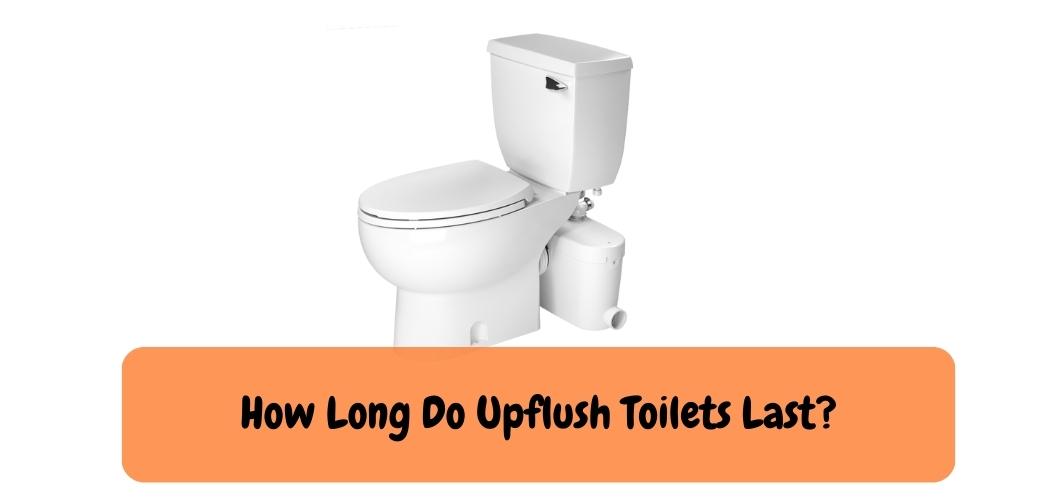Upflush toilets, also known as macerating toilets or grinder toilets, are a type of toilet system that allows for the installation of a toilet in a location where traditional plumbing is not easily accessible or feasible. These toilets are commonly used in basements, garages, or other areas where it may be difficult to install a conventional toilet with a traditional gravity-based plumbing system. If you have an upflush toilet or are considering installing one, you may wonder how long they typically last and what factors can affect their lifespan. Let’s delve into the details.
How Long Do Upflush Toilets Typically Last?
The lifespan of an upflush toilet can vary depending on several factors, including the quality of the toilet, the manufacturer, the maintenance and care it receives, and the frequency of use. On average, a well-maintained upflush toilet can last for 10 to 15 years, but it is possible for them to last longer with proper care.
Factors Affecting the Lifespan of Upflush Toilets:
- Quality of the Toilet: The quality of the upflush toilet you purchase can have a significant impact on its lifespan. It’s essential to invest in a reputable brand and a high-quality toilet system to ensure durability and reliability. Cheaper or inferior quality upflush toilets may wear out more quickly and require more frequent repairs or replacements.
- Manufacturer: The reputation and track record of the manufacturer can also affect the lifespan of an upflush toilet. Established and reputable manufacturers are likely to produce more reliable and durable products compared to newer or less reputable manufacturers. Do your research and choose a manufacturer known for producing reliable and durable upflush toilets.
- Maintenance and Care: Regular maintenance and care can greatly extend the lifespan of an upflush toilet. This includes following the manufacturer’s recommendations for cleaning, using compatible cleaning agents, and avoiding flushing anything other than toilet paper and human waste. Avoid using harsh chemicals or abrasive materials that can damage the components of the upflush toilet system.
- Frequency of Use: The frequency of use can also impact the lifespan of an upflush toilet. Upflush toilets in heavily trafficked areas or commercial settings may experience more wear and tear compared to those in residential settings with lower usage. If your upflush toilet is used frequently, it may require more frequent maintenance and replacement of parts.
- Environmental Factors: Environmental factors such as hard water, high humidity, or extreme temperatures can also impact the lifespan of an upflush toilet. Hard water can cause mineral buildup and clog the system, while high humidity can promote mold and mildew growth. Extreme temperatures can also affect the performance of the system. It’s essential to consider the environmental factors in your location and take appropriate measures to mitigate their effects on your upflush toilet.
Signs That Your Upflush Toilet May Need Replacement:
- Frequent breakdowns or repairs: If your upflush toilet requires frequent repairs or experiences recurring issues, it may be a sign that it’s reaching the end of its lifespan and may need replacement.
- Decreased performance: If you notice a decrease in the flushing power, drainage, or overall performance of your upflush toilet, it may indicate that the system is wearing out and needs replacement.
- Age: Like any other plumbing fixture, upflush toilets also have a finite lifespan. If your upflush toilet is over 10-15 years old, it may be nearing the end of its lifespan and may need replacement.
Overall: The typical lifespan of an upflush toilet can range from 10 to 15 years, but it can vary depending on various factors. Investing in a high-quality toilet, following proper maintenance and care, and being aware of signs of wear and tear can
Where Does the Waste Go in an Upflush Toilet?

An upflush toilet is a type of sewage disposal system that is commonly used in areas where a traditional gravity-based sewer system is not possible or practical. Upflush toilets work by using a small pump to force wastewater and solid waste up into a holding tank located above the toilet bowl. From there, the wastewater is then pumped out through a main sewer line to a treatment facility.
One of the main advantages of an upflush toilet is that it can be installed in areas where a traditional sewer system would be impractical, such as on steep hillsides or in locations with very high water tables. Upflush toilets are also relatively easy to install and maintain, which makes them ideal for use in remote or rural areas.
How Does an Upflush Toilet Work | Upflush Toilet Systems
Conclusion
Upflush toilets are a popular choice for homeowners who want to add a bathroom to their basement or other living space. But how long do these toilets last? The average lifespan of an upflush toilet is about 20 years.
However, many factors can affect the longevity of your toilet, including how often it is uses and how well it is maintain. To extend the life of your upflush toilet, make sure to follow the manufacturer’s instructions for proper care and maintenance. Inspect the unit regularly for signs of wear and tear, and call a plumber if you notice any problems.
